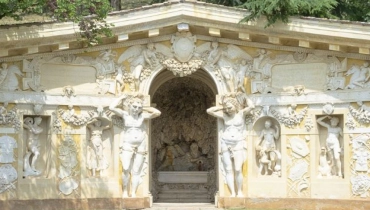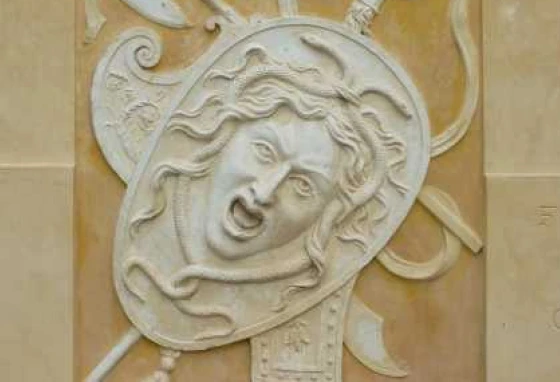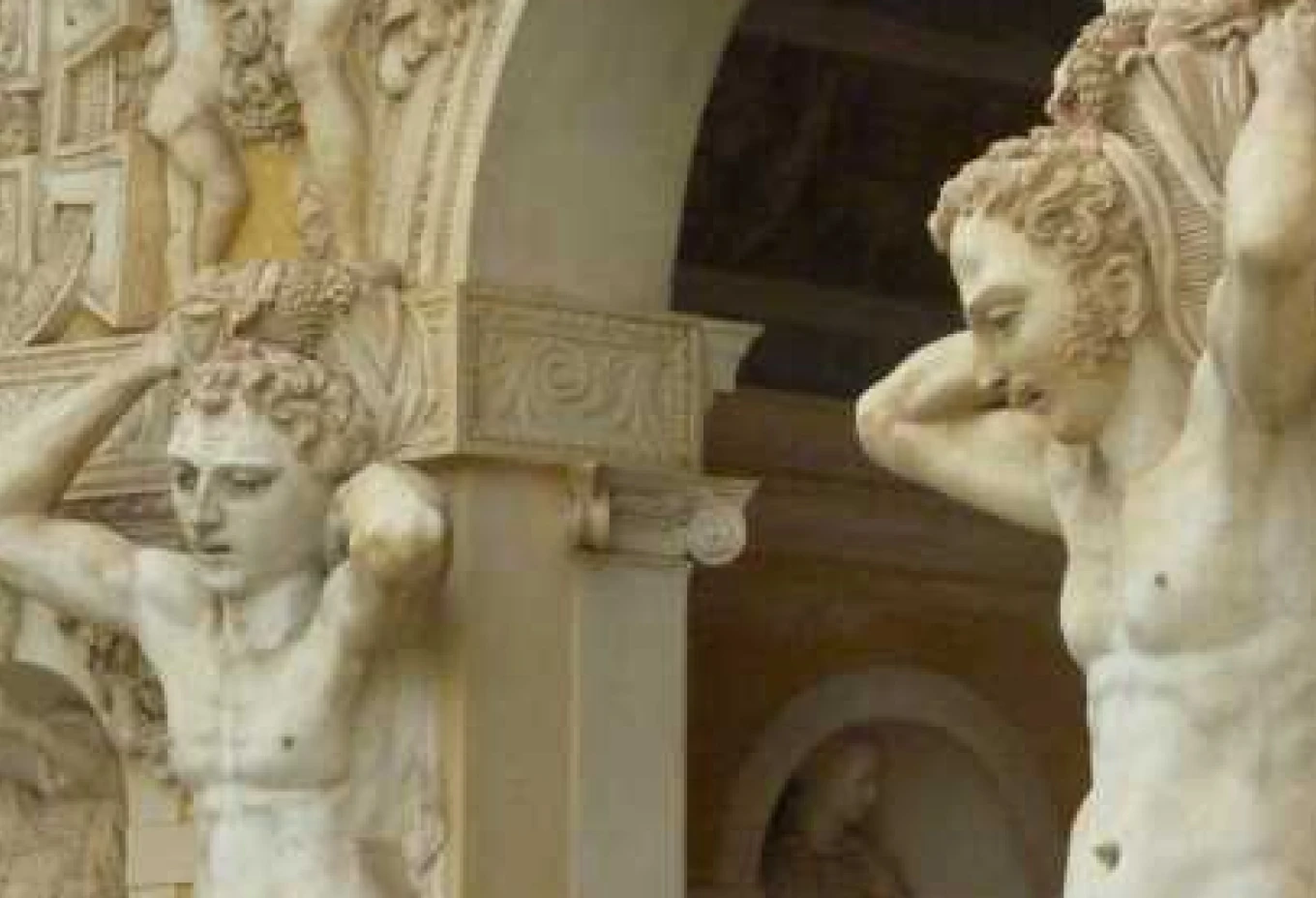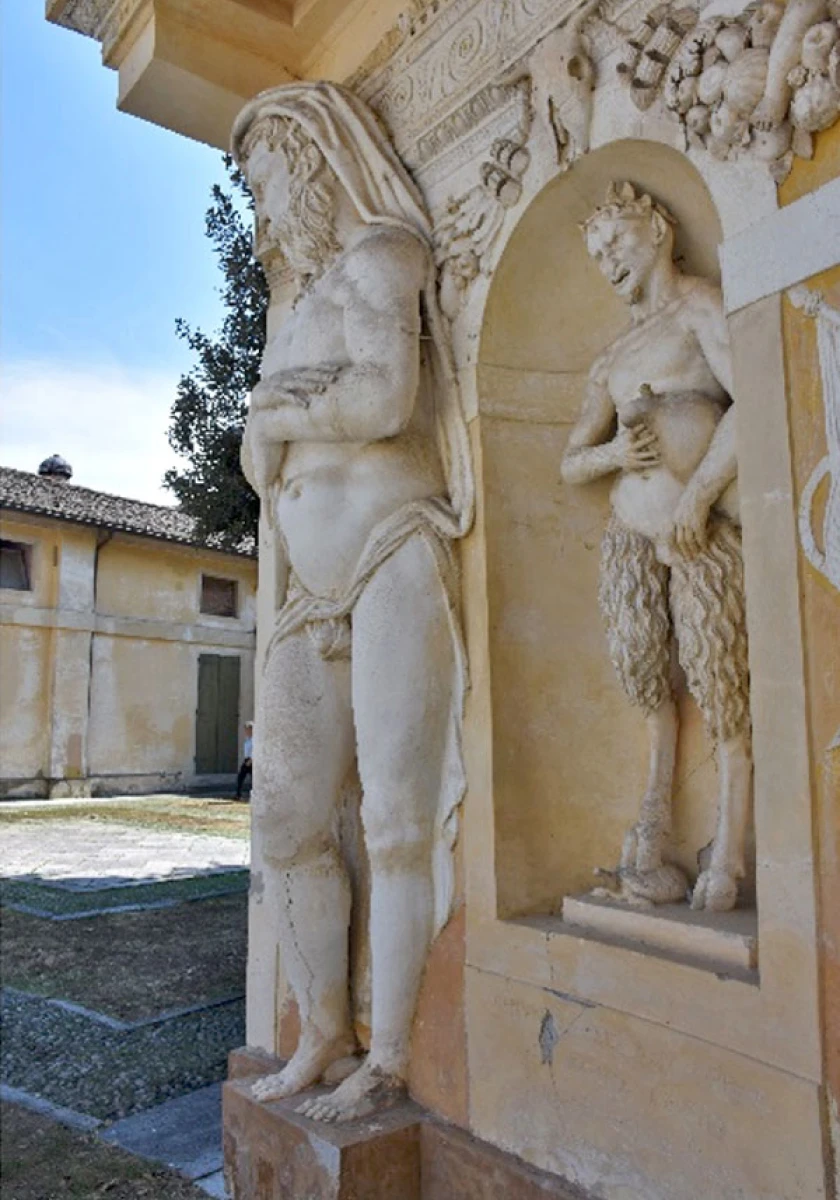The nymphaeum

The compositional centerpiece of the hydraulic system that governs the villa’s water network is the nymphaeum.
Located downhill from the cistern, the water collector—with its sophisticated decorative design—overlooks the secret garden behind the villa. This hydraulic device serves a dual function: protecting and distributing water for household use as well as for irrigating the orchards and gardens.



The primary goal of the conservation plan was to restore the functionality of the fountain’s water supply system, while also undertaking the restoration of its decorative elements, attributed to the hand of Alessandro Vittoria.
This allowed for a thorough study of the structure from both a material and technical-functional perspective. In collaboration with the Superintendence and various consultants who supported the team, the intervention approach was designed to ensure maximum sustainability in both application methods and the use of materials.
In line with the project’s original intentions, a planned conservation strategy was adopted, managed through a specific system that ensured maintenance work was carried out only when truly necessary.

The fountain, described by Palladio as adorned with countless stucco and painted ornaments within the secret garden, today retains the layout introduced by Tomaso Buzzi. He redesigned the paving, reshaped the basin, and most notably altered the overall appearance by choosing a predominantly monochromatic yellow-toned plaster finish. The recent restoration, however, has made it possible to rediscover not only the intricate water features but also the polychromy of the decorations modeled by Alessandro Vittoria, originally designed against a grey-blue background that reinforces the water theme.
The architecture of the nymphaeum has long been interpreted solely as a scenic backdrop to the villa, without fully understanding its aesthetic intent, functional role, and above all, its significance in terms of sustainable architecture. After the restoration, the nymphaeum once again governs the villa and park’s hydraulic system, allowing for more efficient water use and better control over water quality, based on the garden's needs. Today, a water flow monitoring system can regulate the operation of the water features while also assessing their impact on the conservation of the decorative surfaces.
Palladio infused the architecture of the nymphaeum with the full knowledge of Venetian construction techniques, particularly in terms of adaptability and flexibility of the masonry. Behind its theatrical appearance lies a true hydraulic barrier system designed to manage water flow, protecting and supplying the entire villa complex. Over time, a lack of understanding of this feature’s true function led to inappropriate aesthetic and structural interventions—most notably, works that stiffened the masonry structure and thus compromised its inherent ability to adapt to pressure changes caused by fluctuating soil volume, depending on water levels.